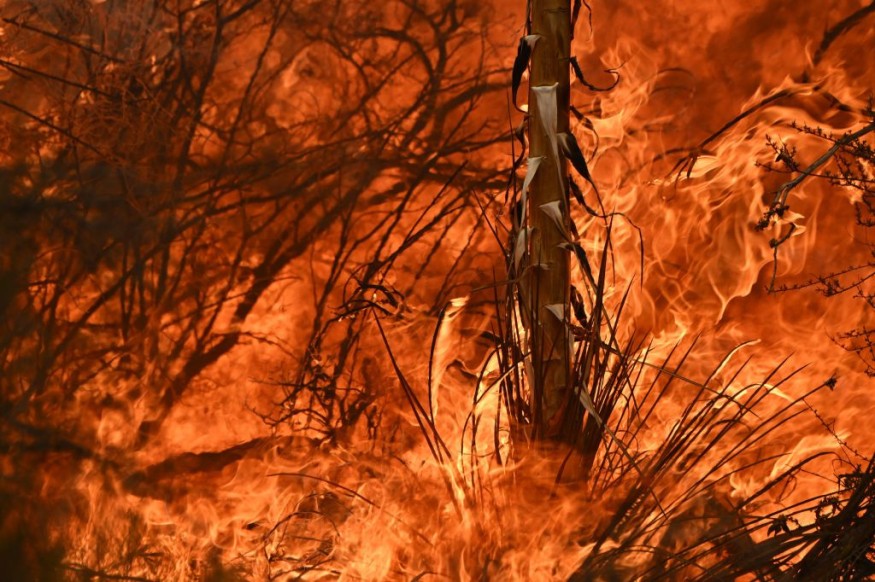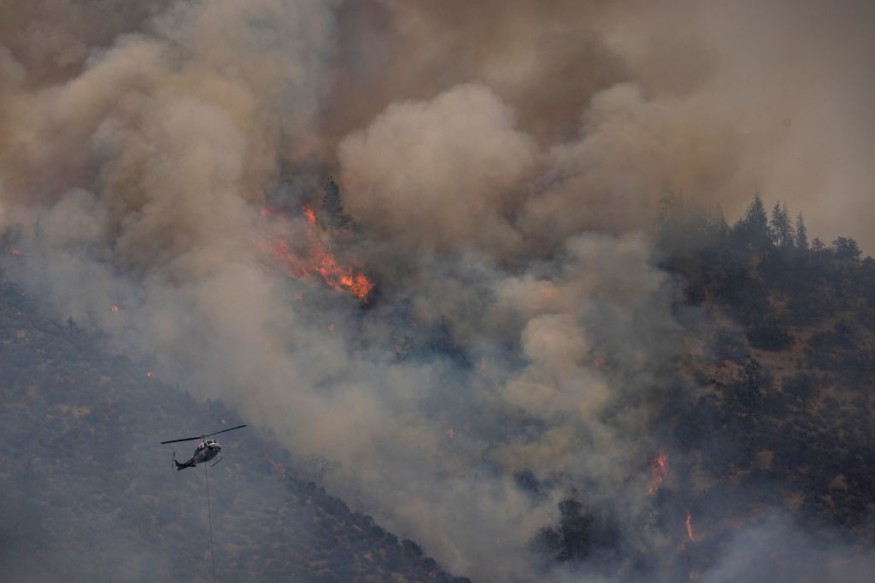The northern Plains, Midwest, and maybe the Northeast could be affected this week by smoke from dozens of big wildfires burning in the West that are hundreds or thousands of miles away, according to AccuWeather meteorologists.
Raging Wildfires

As of September 13, 93 sizable wildfires and fire complexes were burning throughout the West, according to the National Interagency Fire Center. More than 800,000 acres had been burned by the fires, most of which were concentrated in Idaho, Montana, and the Northwest.
According to AccuWeather Meteorologist Adam Sadvary, smoke from several wildfires in the Northwest is expected to move into the Great Lakes area on Wednesday and maybe even reach the Northeast and mid-Atlantic by Thursday.
Chicago, Minneapolis, Des Moines, Iowa, and Bismarck, North Dakota are just a few places where a haze may be present Wednesday.
Polluting the Sky
According to Plume Labs, a company AccuWeather acquired earlier this year, the air quality is expected to be "fair" on Wednesday around Chicago and Minneapolis, which denotes that it is "generally acceptable for most people, but sensitive groups may experience minor to moderate symptoms from long-term exposure" to pollutants in the atmosphere.
In addition to the haze, the sun may appear differently than usual.
According to Sadvary, a specialist in sunrises and sunsets, "Colors throughout the sky will be more vibrant when the sun is closer to the horizon in the morning and the evening."
Rayleigh Scattering
According to Sadvary, this phenomenon is referred to as Rayleigh scattering. "The smoke particles can scatter more of the sun's energy, bouncing blue-wavelength light back into space and permitting more red-wavelength light through the atmosphere," he added.
However, not all sites will see better sunrises and sunsets due to the high levels of smoke in the atmosphere.
According to Sadvary, "when smoke is hefty, the sun may be largely blotted out."
On Thursday, it's expected to rain and thunderstorm in a few places in the Dakotas and Minnesota. Any high-level smoke will be hidden by the clouds brought on by the rain.
Rising Smokes

Although smoke typically rises quite far above the ground as one moves away from a wildfire, this is not always the case.
In particular, for people with pre-existing medical issues, smoke particles might occasionally mix with surface air and result in poor air quality, according to Sadvary.
Residents of the Midwest and East would recognize the hazy skies and vibrant sunsets brought on by the West's wildfires. A similar situation occurred only one year ago, in July and August of 2021. The smoke in such a situation traveled thousands of kilometers. The Dixie Fire, which consumed more than 963,000 acres in California and other fires in the West, was to blame for this.
A chunk of western Europe was reached by the smoke plume from the Dixie Fire, which burned an area greater than the state of Rhode Island, according to Sadvary.
Uncommon Occurence
Although it is doubtful that the smoke will go that far this year, certain people of the Central and Eastern states may get the opportunity to witness something that only occurs once or fewer frequently.
For similar news, don't forget to follow Nature World News!
© 2026 NatureWorldNews.com All rights reserved. Do not reproduce without permission.





